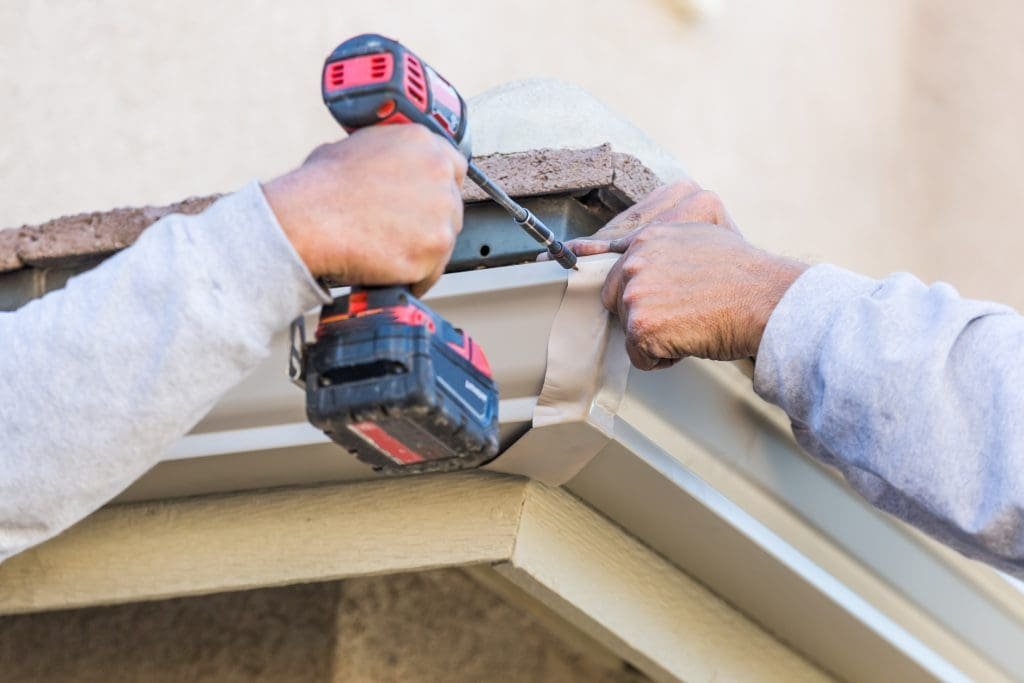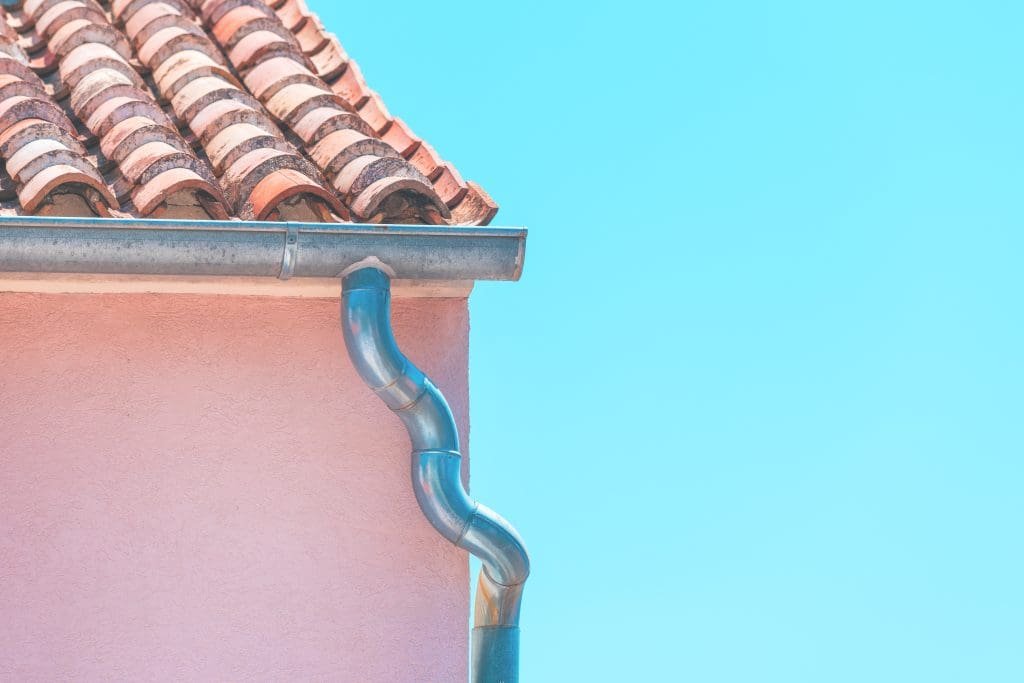Gutters play a crucial role in maintaining the integrity and functionality of your home. Not only do they protect your foundation and landscaping from rainwater damage, but they also help prevent water from seeping into your walls and causing costly repairs. However, like any other part of your home, gutters can develop problems over time that need to be addressed. In this ultimate guide, we will take you through the process of gutter repair, step by step, to help you restore the functionality and beauty of your gutter system.
Understanding the Basics of Gutter Systems
Before diving into the repair process, it’s important to understand the basics of gutter systems. Gutters consist of channels that collect rainwater from the roof and direct it away from your home’s foundation. This prevents water from pooling around the house, which can lead to structural damage and mold growth.
The Importance of Gutters for Your Home: Gutters are essential for protecting your home’s foundation, landscaping, and overall structural integrity. They prevent soil erosion, basement flooding, and water damage to your exterior walls. Additionally, gutters help maintain the aesthetic appeal of your home by directing water away from your siding and preventing staining.
Different Types of Gutters: Pros and Cons: When it comes to gutter systems, there are various types to choose from, each with its own advantages and disadvantages. Common types include aluminum, vinyl, copper, and steel gutters. Aluminum gutters are lightweight, rust-resistant, and easy to install, while vinyl gutters are affordable and low-maintenance. Copper gutters offer an elegant look but can be pricier. Lastly, steel gutters are known for their durability but require regular maintenance to prevent rust.
Choosing the Right Gutter Size: Another important aspect to consider when installing or replacing gutters is the size of the system. The size of your gutters will depend on factors such as the pitch of your roof, average rainfall in your area, and the square footage of your home. It’s crucial to ensure that your gutters are adequately sized to handle the amount of water runoff from your roof to prevent overflow and potential water damage.
Maintaining Your Gutters: To ensure your gutter system functions effectively, regular maintenance is key. This includes cleaning out debris such as leaves and twigs that can clog the channels, inspecting for any leaks or damage, and ensuring that the downspouts are clear of obstructions. By staying on top of gutter maintenance, you can prolong the lifespan of your gutters and protect your home from water-related issues.
Tools and Materials Needed for Gutter Repair

Before you start repairing your gutters, it’s important to gather the necessary tools and materials. Here’s a list of essential items you’ll need:
Essential Tools for Gutter Repair:
- Gloves
- Ladder
- Trowel or Scoop
- Screwdriver
- Caulking Gun
- Sealant
- Wire Brush
- Hammer
- Hacksaw
- Drill or Rivet Gun
Having the right tools for gutter repair is crucial to ensure the job is done efficiently and effectively. Gloves will protect your hands from sharp edges and debris, while a sturdy ladder is essential for reaching high areas safely. A trowel or scoop will help you remove leaves and debris from the gutters, and a screwdriver is necessary for tightening loose screws and fasteners. A caulking gun and sealant are vital for sealing leaks, while a wire brush can be used to clean out any stubborn clogs. A hammer, hacksaw, and drill or rivet gun will come in handy for more extensive repairs.
Choosing the Right Materials for Your Gutter:
When it comes to gutter repair, using the right materials is essential for a long-lasting and effective fix. Depending on the type of repair needed, you may require sealant, caulk, fasteners, gutter spikes, hangers, or even replacement sections of gutters. Make sure to choose high-quality materials that are compatible with your existing gutter system for the best results.
Sealant is crucial for filling in gaps and preventing leaks, while caulk can be used to seal joints and seams. Fasteners such as screws and gutter spikes are essential for securing the gutters to the fascia board. Hangers provide additional support and help keep the gutters in place during heavy rainfall. In some cases, you may need to replace damaged sections of gutters to ensure proper drainage and prevent water damage to your home’s foundation. By selecting the right materials for your gutter repair project, you can prolong the life of your gutters and protect your home from water damage.
Step-by-Step Guide to Gutter Repair

Safety Precautions Before Starting:
Prioritize safety when working on your gutters. Have a sturdy ladder and someone to assist you if necessary. Wear protective gloves to avoid cuts from sharp edges and debris.
Assessing the Damage:
Inspect your gutters for any signs of damage, such as sagging, leaks, or clogs. Identify problem areas that require immediate attention.
Cleaning and Preparing Your Gutters:
Before starting any repairs, it’s crucial to clean your gutters thoroughly. Remove debris, leaves, and dirt with a trowel or scoop. Flush the gutters with water to clear any remaining dirt.
Once the gutters are clean, check for loose or damaged hangers and reattach or replace as necessary. This ensures that your gutters are securely fastened to the fascia board.
Repairing Leaks and Holes:
If you notice leaks or holes in your gutters, start by drying the affected area and removing any rust or debris using a wire brush. Apply a layer of sealant or caulk to seal the leak or hole. For larger holes or extensive damage, consider using a gutter patching kit or replacing the damaged section entirely.
Fixing Sagging Gutters:
Sagging gutters can be caused by loose or damaged hangers. Inspect the hangers and tighten or replace them as needed. Additionally, check if the gutter slope is correct to ensure proper water flow.
Replacing Damaged Sections:
If your gutters have sections that are beyond repair or severely damaged, it’s best to replace them. Measure the length of the damaged section and purchase a replacement piece. Cut the new section to size using a hacksaw and secure it in place with screws or rivets.
Once you have completed the repairs, it’s important to perform regular maintenance on your gutters to prevent future damage. This includes cleaning them at least twice a year, typically in the spring and fall, to remove any debris that may accumulate. You can also consider installing gutter guards to help keep leaves and other debris out of your gutters, reducing the need for frequent cleaning.
Another important aspect of gutter maintenance is checking for proper water flow. After a heavy rain, take a walk around your home and ensure that water is flowing freely through the gutters and downspouts. If you notice any areas where water is pooling or overflowing, it may be a sign of a clog or improper slope. Address these issues promptly to prevent damage to your home’s foundation or landscaping.
Lastly, keep an eye out for any signs of damage or wear and tear on your gutters. Over time, exposure to the elements can cause gutters to deteriorate, leading to leaks, sagging, or other issues. Regularly inspect your gutters for any signs of rust, cracks, or loose components. By catching and addressing these problems early on, you can avoid more extensive repairs down the line.
Preventive Measures to Avoid Future Gutter Damage

Regular Gutter Maintenance Tips:
To avoid frequent gutter repairs, it’s important to perform regular maintenance. Clean your gutters at least twice a year, in spring and fall, to remove debris and prevent clogs. Trim overhanging tree branches to prevent leaves from accumulating in your gutters. Inspect your gutters for any signs of damage and address them promptly.
Additionally, during your gutter maintenance routine, check for any loose fasteners or sagging sections that may impede proper water flow. Tighten screws and reposition brackets as needed to ensure that your gutters are securely attached to your home. Proper alignment is essential for effective water drainage and to prevent potential structural damage.
Installing Gutter Guards:
Gutter guards are protective covers that help keep out leaves, debris, and pests while allowing water to flow freely. Consider installing gutter guards to reduce the frequency of gutter cleaning and protect your gutters from damage.
When selecting gutter guards, opt for a design that is compatible with your existing gutter system and roof type. There are various options available, including mesh screens, bottle brush inserts, and solid covers. Choose a gutter guard that suits your specific needs and budget to enhance the longevity of your gutters.
The Role of Downspouts in Gutter Health:
Downspouts play a crucial role in diverting water away from your home’s foundation. Ensure that your downspouts are properly connected to the gutter system and extend at least five feet away from the foundation to prevent water from pooling near the house.
Consider adding downspout extensions or splash blocks to further direct water away from your property and prevent soil erosion. Properly channeling water away from your home’s foundation is essential for maintaining structural integrity and preventing basement flooding.
By following this ultimate guide to gutter repair, even beginners can tackle common gutter problems and maintain a functional gutter system. Remember to prioritize safety, invest in quality materials, and perform regular maintenance to keep your gutters in optimal condition. With proper care and timely repairs, you can protect your home from water damage and preserve its curb appeal for years to come.





